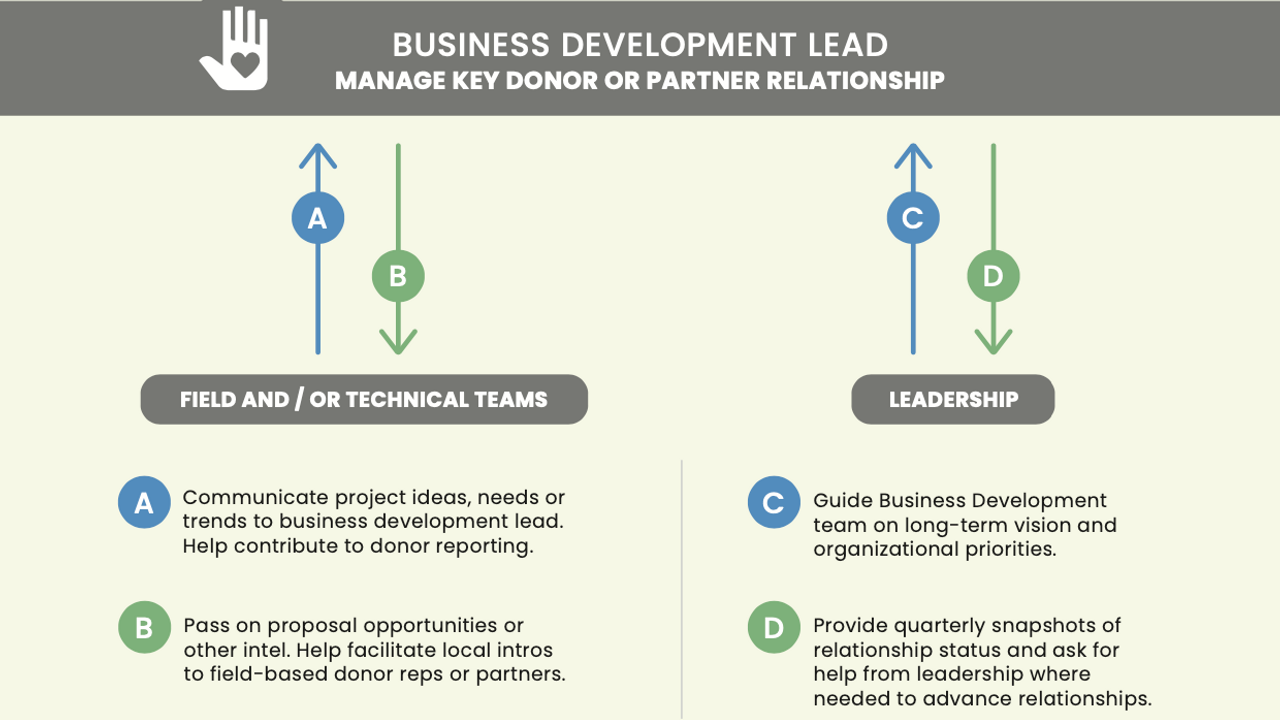Effective Communication Flows for Successful Fundraising Results

It’s December 10th, and your global nonprofit’s technical and operations teams are starting to wrap up for the holidays. You receive an urgent email from a longstanding donor inquiring whether your teams in 3 of the 4 countries where you are working on one of their funded programs can quickly prepare a proposal to deliver on some additional activities before the end of the year.
Sound familiar? What do you do?
How do you communicate with your field teams, leadership and colleagues around both the urgency to address this donor’s needs and requests, and the reality of what’s feasible in the field? How do you ensure that you respect the needs of your organization's stakeholders, while also delivering on your fundraising duties?
This conundrum happens way more often than it should. Donors have demands that are often tough to meet, and yet funding can be scarce. Thus technical delivery teams scramble to get work completed and funds allocated. How does a development team prepare for these “emergencies” without burning every bridge within their organization?
It often comes down to communication flows and systems that are put in place to ensure regular dialogue, trust building and aligned priority setting across fundraising, technical delivery and leadership teams.
Here is what we often recommend to our members:
- Business development or fundraising teams should be the central points of contact for donors and/or strategic partners that are providing resources for organization programs. While this does not replace relationships built between field teams and local donor representatives, it does help build trust between the donor and your organization. Having a trusted point of contact means you can push back if needed on the donor, and/or provide the donor a realistic view of what’s feasible in the remaining timeframe. Being the central point of contact also means you can funnel the most critical information to your field and leadership teams, saving them time and stress, allowing them to focus on delivery.
- There should be a regular two way flow of communication at all times between the business development or relationship lead and the field and technical teams. These flows of communication allow the field and technical teams to regularly communicate project ideas, needs or trends to the business development lead, and ensure that the organization’s donors know what’s feasible in terms of delivery or not. In return, the business development lead passes on proposal opportunities or other donor intel on a regular basis. When this communication flow is seamless, it helps the business development team know what’s truly possible in terms of delivery to a donor funded project. If in your regular communication with the field, you know that they are burnt out and couldn’t take another project component, it means you’ll have to push back on the donor’s requests. Because you’ve been establishing trust with the donor, you can lay it to them straight. Conversely, without having such systematic communication among your teams, you may put them in a quandary, having to delivery a proposal or program with just a couple weeks left in the year and without the resources, bandwidth or local support to deliver.
- There should also be a regular, consistent, two way flow of communication between business development teams and leadership. While leadership can help guide business development teams on long term organizational vision and priorities, it’s up to the business development team to provide quarterly snapshots of donors’ relationship status, and ask for help from leadership where needed. Evoking leadership engagement may be essential if donor requests are difficult to address from time to time. Yet leadership can’t just step in without prior knowledge of the work or relationship. Thus regular communication flow ensures systematic support is in place.
Simple communication flows with regular reporting, check ins and updates will ensure fundraising and business development efforts are not handled in emergency, frantic ways. They also ensure your donors feel supported, see how their funds are being allocated, get the intel back on how the programs are running, and ideally give you more than 2 weeks to prepare a proposal.
Image designed by Dawn Sword/Serendipity Creative LLC
Stay connected with news and updates!
Join our mailing list to receive the latest news and updates from our team.
Don't worry, your information will not be sold or shared.

